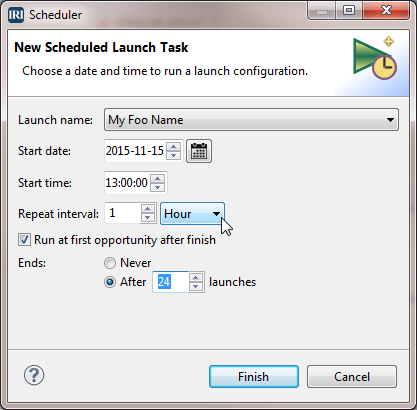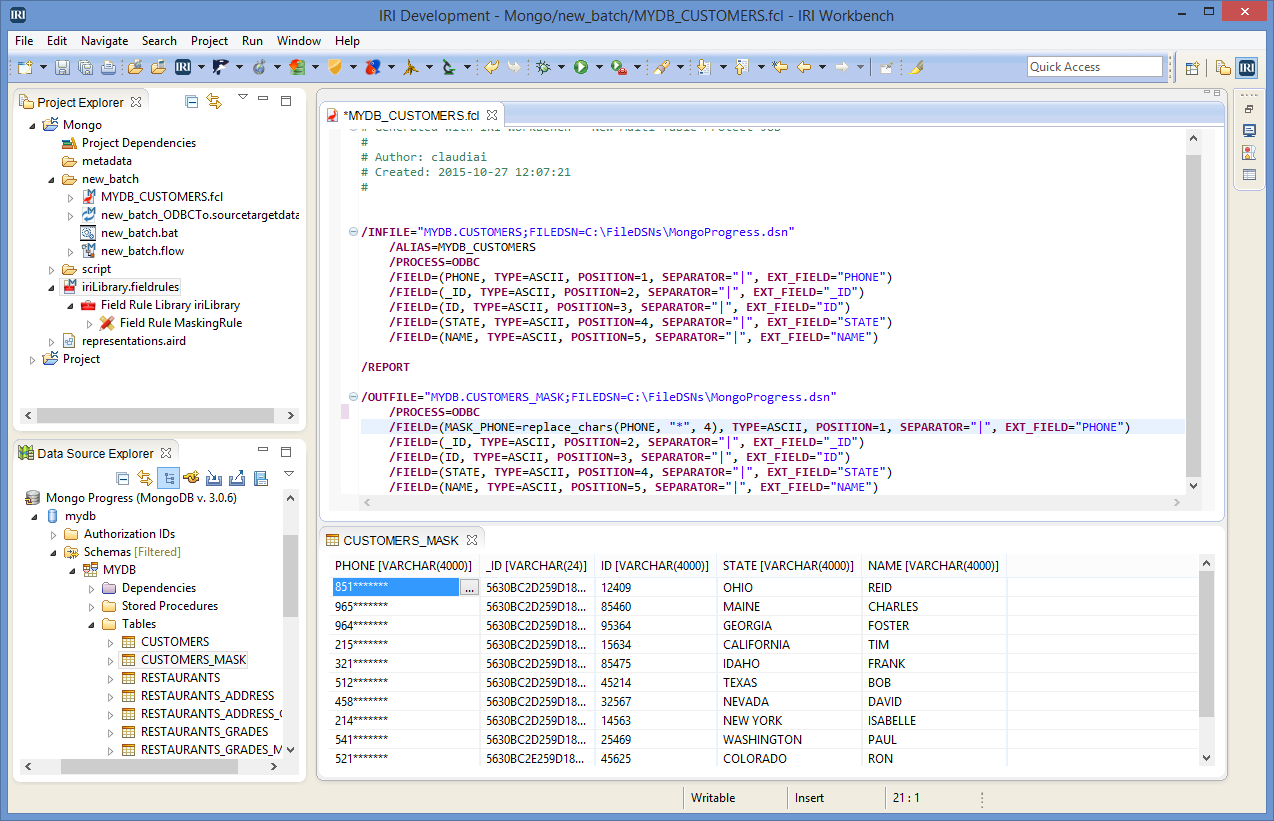 IRI
IRI
Infonomics and You [video]
Information is the commodity of the 21st Century, and data has inherent economic value. But because information is not recorded on balance sheets, it is often overlooked. Read More
 IRI
IRI
Information is the commodity of the 21st Century, and data has inherent economic value. But because information is not recorded on balance sheets, it is often overlooked. Read More
 Business Intelligence (BI)
Business Intelligence (BI)
There is now a bulk/batch Change Data Capture (CDC) wizard in the IRI Workbench GUI for Voracity, built on Eclipse™. This new graphical report builder compares previous and current data sources based on a flag field you select, and gives you the option of producing five different targets — Cumulative, Delete, Equal, Insert, and Update — or any combination thereof. Read More
 ETL
ETL
In addition to running IRI software from the command line, in batch scripts, DBMS schedulers like Oracle’s, or through third-party workflow automation suites like Stonebranch Universal Controller, the IRI Workbench development environment now has a built-in job scheduler. Read More
 Data Masking/Protection
Data Masking/Protection
Once a database exceeds a certain size, it becomes expensive — and risky from a security perspective — to provide full-size copies for development, testing, and training. Read More
 Data Transformation
Data Transformation
Beyond the client-side task launch scheduler provided in the IRI Workbench graphical IDE for Voracity™ ETL and sub-product users, server-side IRI job scheduling is also possible in simple tools like cron, and more advanced workflow automation suites like StoneBranch Universal Automation Center™ (UAC), CA Autosys, Cisco TES, IBM Tivoli, and ASC ActiveBatch. Read More
 Data Transformation
Data Transformation
During the design of IRI Voracity workflows in the IRI Workbench (Eclipse) GUI, you can preview the results of one or more transforms before saving or running the project. Read More
 Big Data
Big Data
Note: This example demonstrates a more direct method of using IRI FieldShield or IRI Voracity to statically mask PII within structured MongoDB collections. Our older how-to-article on indirect data masking of MongoDB through export/mask/import from 2015 is here, and a newer method through MongoDB’s native driver support in CoSort v10 from 2018 is here. Read More
 Data Quality (DQ)
Data Quality (DQ)
Customers drive business, and they want to be understood and valued. That starts with getting their (only) name right, and having an accurate view of their transaction history, preferences, and related information. Read More
 Business Intelligence (BI)
Business Intelligence (BI)
A dimension is a structure that categorizes a collection of information so that meaningful answers to questions regarding that information may be obtained. Dimensions in data management and data warehouses contain relatively static data; however, this dimensional data can change slowly over time and at unpredictable intervals. Read More
 Business Intelligence (BI)
Business Intelligence (BI)
Dimensional data that change slowly or unpredictably are captured in Slowly Changing Dimensions (SCD) analyses. In a data warehouse environment, a dimension table has a primary key that uniquely identifies each record and other pieces of information that are known as the dimensional data. Read More